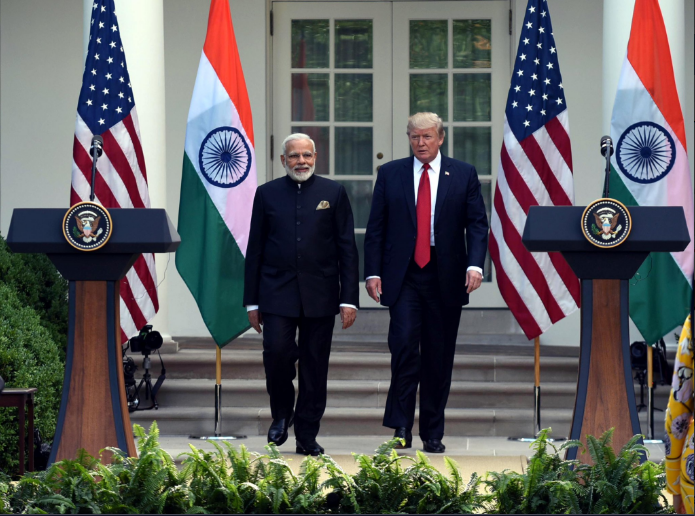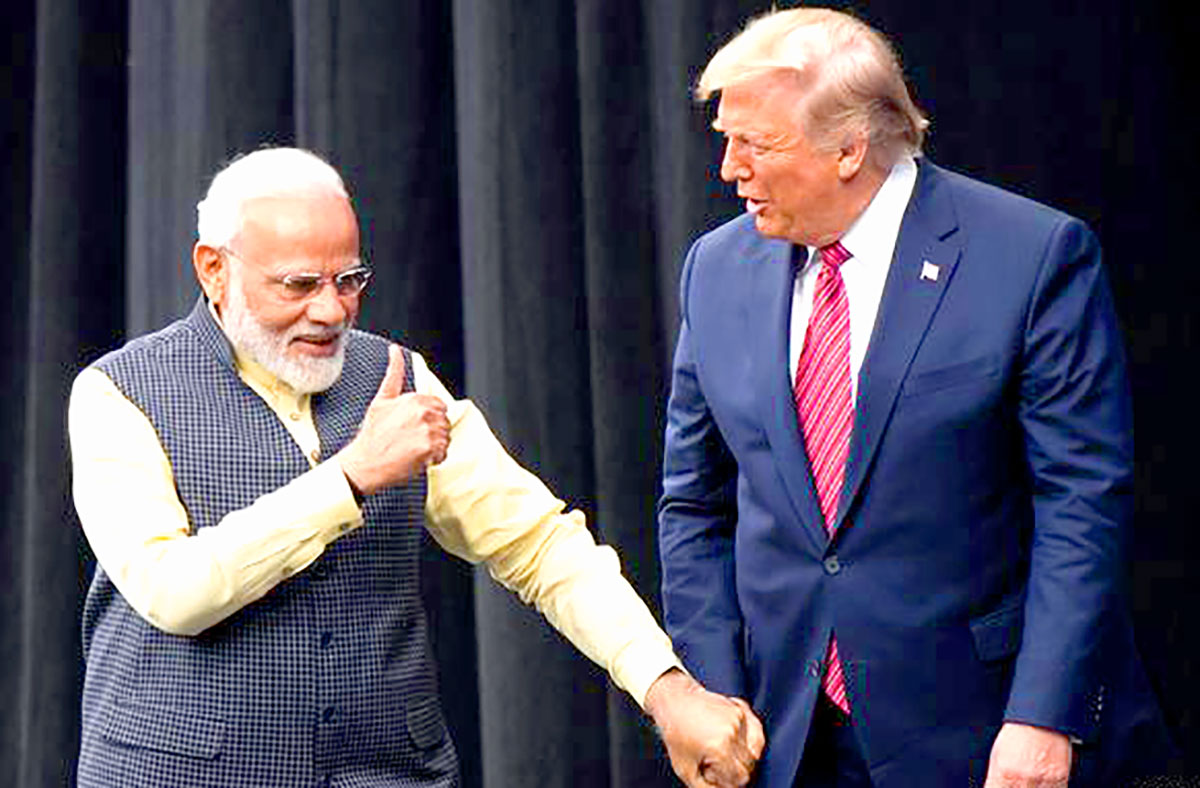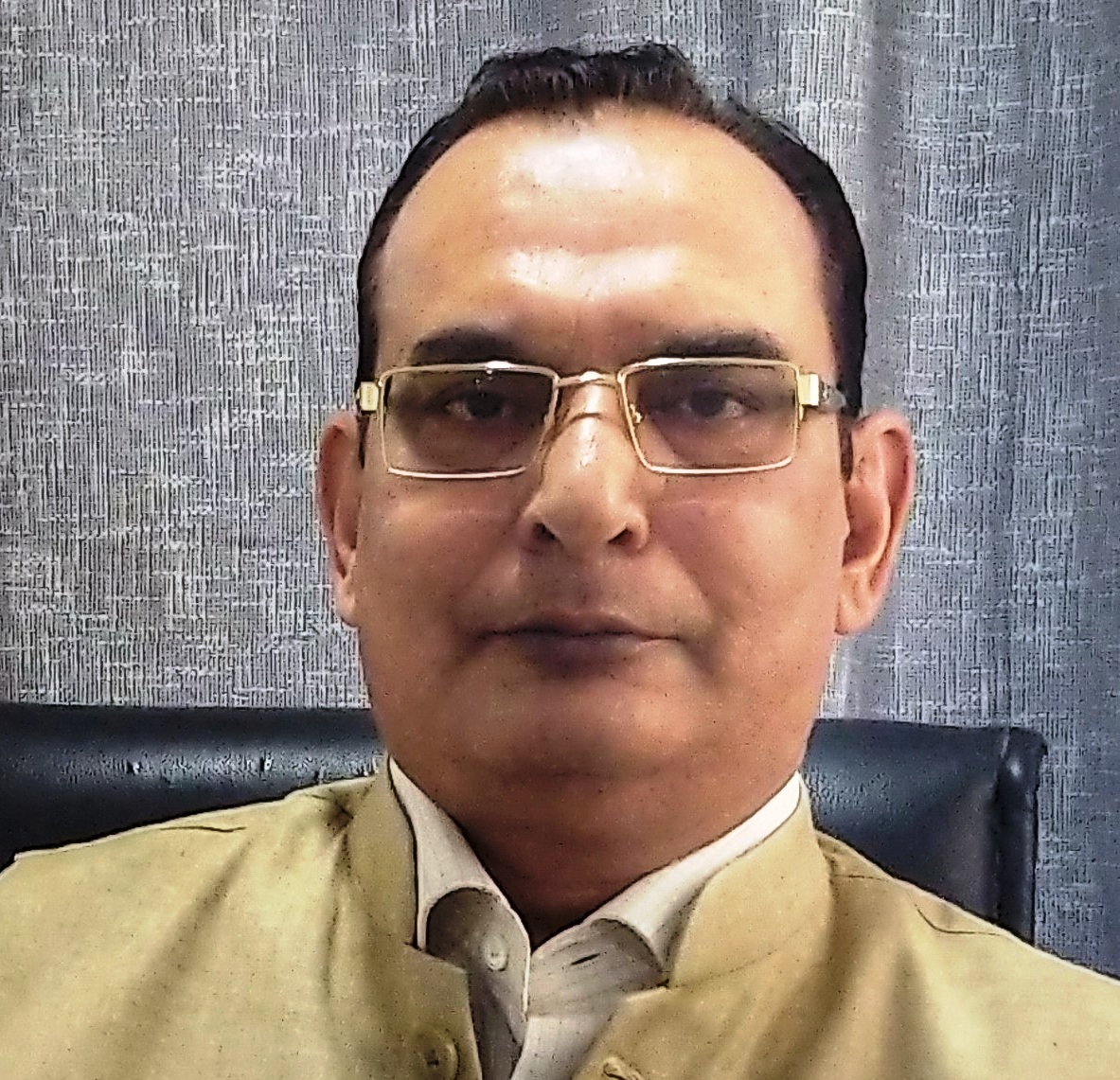by Asad Mirza
The Trump administration is trying hard to woo the Indian electorate in the upcoming US presidential elections. The Indian electorate enjoys considerable clout in some key American states and Trump administration wants to secure these votes.

Some recent observations and statements by the US State Department on India’s role in the region, have led to predictions regarding a foreseeable considerable change in the US view of India and its capabilities.
The US Deputy Secretary of State Stephen E Biegun, was in India on a three-day visit last week. The week before that, the Indian FM S Jaishankar met the US Secretary of State Mike Pompeo in Tokyo.
Pleased to meet US Deputy Secretary of State Stephen Biegun. Useful exchange of views on world politics and regional issues. Appreciated the steady progress of our bilateral cooperation. Confident that our Strategic Partnership would continue to deepen. pic.twitter.com/PrnRMo90fC
— Dr. S. Jaishankar (@DrSJaishankar) October 12, 2020
The visit comes a month after the US slamming China for picking a fight right now on virtually every front, and is seen as a clear strategic signal to Beijing. Recently, Washington has also increasingly criticised Beijing over the Coronavirus, trade, technology, Hong Kong, Taiwan and human rights. China while denying the accusations, blames the US as an aggressor in the South China Sea, and on Coronavirus it claims to have provided all relevant data to the WHO, well in time. It denies mistreatment and human rights violations of the Uyghur Muslims in China and accuses the western nations of meddling in internal Chinese affairs.
The visit assumes further significance as it comes at a time when India and Chinese military standoff at the borders has entered the sixth month and it coincides with the next round of India-China Corps Commander-level talks.

During the visit, Beigun used many parables and adjectives to describe the Indo-US ties and their future besides the future role for India in the regional security. He also said India and the US do not have to follow the security partnership models like that of NATO or those that emerged in the post-Cold War era.
In his address at the US-India Forum, Beigun pointed out the conditions emerging for an organic and deeper partnership — not an alliance on the post-war model, but a fundamental alignment along shared security and geopolitical goals shared interests, and shared values, between the US and India. In the same breath, he also warned oo an elephant in the room, referring to China.
Beigun stressed on the changed perception of today’s security partnerships. He said we do not need to follow the model of the last century of mutual defence treaties with a heavy in-country US troop presence. Today we benefit from forging close links with countries like India that share our vision of a free and open Indo-Pacific, and that seek to provide for their own defence.
He also said that the US’ post-WW II Pacific treaty alliances contributed to security and prosperity in the Indo-Pacific region for seven decades.
Quad Partnership
According to Biegun, India and the US have been too cautious in creating a comprehensive security dialogue, known as the Quadrilateral Security Dialogue or Quad.
The Quadrilateral Security Dialogue (QSD, also known as the Quad is an informal strategic forum between the United States, Japan, Australia and India which was initiated in 2007. However, the alliance followed a tumultuous course due to Chinese protests, and the Australian withdrawal in 2008. Also with more Chinese-friendly prime ministers coming to power in Japan and India, the alliance seemed to have lost relevance. However, efforts were made in 2017 to revive the security pact among tensions in the South China Sea caused primarily by China and its territorial ambitions.
Earlier, the State Department had said in a note that Beigun will focus on strategic cooperation with India both in the Indo-Pacific region and around the world. Biegun also said the US would cooperate in strengthening India’s ability to defend itself and by promoting interoperability among the militaries through regular exercises and exchanges, common defence platforms, and co-development.
The visit is also likely to set the stage for the Indo-US 2+2 ministerial meeting later this month. While there is a possibility of a 2+2 meeting on October 26-27, it will depend on the evolving situation in the pandemic. The two sides are keen to wrap up the ministerial before the November 3 US Presidential polls, as a consolidation exercise of the past four years’ efforts.
“The upcoming 2+2 ministerial meeting between Secretary Pompeo and Minister Jaishankar and their respective defence counterparts will be an excellent opportunity to explore next steps on some of these issues,” he added.
The two countries began a two-plus-two dialogue at the level of foreign and defence secretaries (not ministers) almost a decade ago in 2010. This dialogue was mandated by the Action Plan to Advance Security Cooperation concluded between the two countries in December 2009. Key issues discussed under this format include maritime, cyber, and outer space security. Since the interaction is at the ministerial level, more ground is supposed to cover under this mechanism.
Import of US interest in India
The manner in which the US administration has been devoting special attention to India and the increased interaction between the top-level ministers and officials of the two countries sets one wondering with regard to the sudden interest of the US interest in India.
First, it seems that the US administration is trying to rework the defence of its interests in the Indo-Pacific region, seeking Quad countries like India, Japan and Australia to play a more active role in the region, but with less US help. At the same time, it is trying to bolster the Quad alliance to counter the increasing Chinese might in the region, on all fronts including defence and trade. This is also the reason why the US is attaching more importance to the upcoming 2+2 dialogue between the foreign and defence ministers of the two countries.

Secondly, it seems to be more a play for optics. The Trump administration is trying hard to woo the Indian electorate in the upcoming US presidential elections. The Indian electorate enjoys considerable clout in some key American states and Trump administration wants to secure these votes. Maybe, organisations like ‘Friends of BJP’ in the US might be able to get some votes to swing in favour of Trump and to ensure that the Trump administration is upping up the optics and verbal play both in the US and India.
(Asad Mirza is a senior journalist based in New Delhi. In his career spanning more than 20 years, he was also associated with BBC Urdu Service and Khaleej Times of Dubai. The opinions expressed in this article are those of the author’s and do not purport to reflect the opinions or views of Kashmir Life.)















